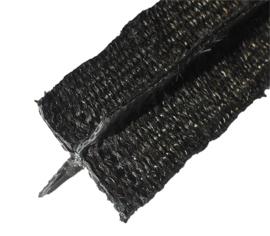Press Release
2009-03-01 |
||
| First Industrial 3D-Weaving Machine Developed | ||
World’s first industrial 3D-weaving machine became operational on 21 January 2009 heralding a major breakthrough in 5000 years of weaving history. Set to weave on a positive note, it directly wove the + (plus) cross-section profile using carbon fibres in a flawless manner. This first industrial 3D-weaving machine has been jointly developed by Biteam AB and Department of Lightweight Structures, KTH, Stockholm, under the European 6th Framework Project MOJO. The 3D-weaving machine, based on the technology invented by Dr. Nandan Khokar, will be gradually employed to produce advanced and complex profiles. This historically important weaving development was supported by, among others, Outokumpu for the special steel needed for manufacturing certain parts and Festo for technical support with pneumatics. The machine’s design specifications were evolved to satisfy a number of customers’ requirements. A formal inauguration to commission it will follow. At the heart of the 3D-weaving technology is the dual-directional shedding operation. The method is highly flexible in that woven 3D profile materials in solid, shell, tubular and their combination types are directly producible using all kinds of fibres and fibre combinations. Materials such as electrical wires, slender tubes etc. can be also incorporated. Woven 3D profiled materials having cross-sections up to 120x120 mm and 3 m length can be produced directly. The machine’s ability to produce families of cross-sectional profiles of Pi, H, T, L, J and many more makes the 3D-weaving process highly versatile and relevant. Families of such fully unitised woven 3D profiled materials are increasingly required for manufacturing composite materials for structural applications. Production of a series of woven profiles is under progress now for evaluating the machine and the woven profiled materials. There is a demand from many industries for these novel woven 3D profiles, not only because of their improved performance and producibility, but also for practically and economically speeding up engineering of lightweight structural constructions to meet the challenges of the present global environmental concerns.
|

Set to weave the + (plus) profile directly, the world’s first 3D-weaving machine wove it flawlessly to open a new chapter in more than 5000 years of weaving history. |
|
| Download PDF |

